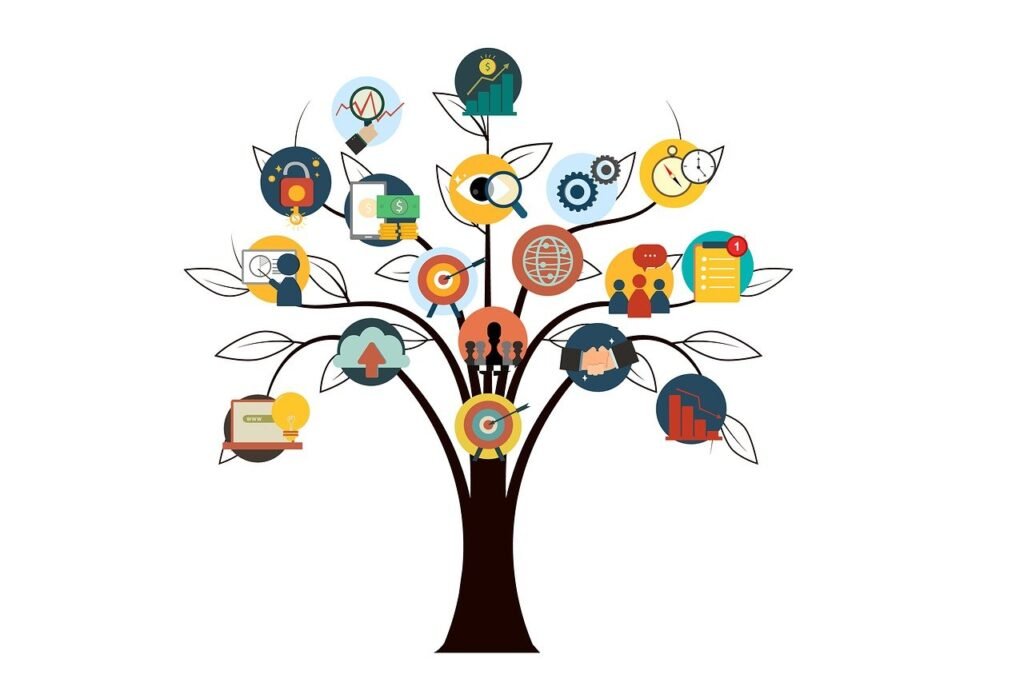This Article has been revised, edited and added to, by Poulomi Chakraborty.
- The Power of Community in Enhancing Brand Loyalty
- Strategies for Building and Maintaining Online Communities
- Establish a Strong Foundation with Clear Objectives
- Choose the Right Platforms
- Create Valuable Content Consistently
- Foster Engagement Through Interaction
- Leverage Community Feedback
- Organize Regular Community Events
- Monitor and Adapt
- Cultivating a Culture of Openness and Innovation
- Strategic Partnerships and Collaborations
- Implementing Gamification Techniques
- Focusing on Micro-Communities
- Regularly Celebrating Community Milestones
- Tools and Techniques for Effective Online Community Management
- Utilizing the Right Community Management Tools
- Techniques for Engaging and Growing Your Community
- Integrating Advanced Analytical Tools
- Enhancing Community Experience with AI
- Utilizing CRM Systems for Community Management
- Implementing Robust Moderation Tools
- Developing Mobile Optimization for Community Engagement
- Measuring the Success of Your Community-Building Efforts
- Conclusion
In today’s digital age, the concept of community has transcended physical boundaries, establishing itself as a cornerstone of successful digital marketing strategies. This article delves into how building an engaged online community can be a game-changer for brands looking to amplify their presence and impact online. Through a detailed exploration, we’ll uncover the nuances of community engagement and its pivotal role in shaping marketing successes in a digital-first world.
The Power of Community in Enhancing Brand Loyalty

Imagine two coffee shops on a bustling city street: Coffee Aroma and Brew Corner. Coffee Aroma has a basic website and a seldom-updated Facebook page. On the other hand, Brew Corner has a vibrant online community. They regularly engage with customers on social media, respond to comments, and host weekly live sessions where they discuss new blends or coffee-making tips. Which shop do you think enjoys more customer loyalty and why?
Brew Corner, with its active community engagement, not only keeps its current customers informed and involved but also attracts new patrons who see the lively interactions and feel a part of something bigger than just a coffee purchase. This scenario illustrates how vital a strong, engaged community is to fostering brand loyalty. Let’s break down why community building is essential and how it can transform a brand’s relationship with its customers.
Emotional Connection
An engaged community allows a brand to establish an emotional connection with its customers. When people feel part of a community, their loyalty to it can transcend the purely transactional nature of buying a product or service. They are part of a shared story and experience, which deepens their emotional investment in the brand. For example, Brew Corner’s customers might not just see themselves as consumers but as members of a coffee-loving family, making them more likely to return.
Consistent Engagement
Regular interaction with your community keeps the brand top-of-mind for consumers. For Brew Corner, those weekly live sessions are a constant reminder to their community about their presence and value. Consistent engagement helps maintain a relationship with your audience, making them more likely to choose your brand over a competitor when the need arises.
Authentic Feedback
Community building opens up channels for feedback that are both authentic and immediate. Customers in a community setting are more likely to share their genuine experiences and suggestions. For Brew Corner, this could mean valuable insights into which products are hitting the mark and which aren’t. This direct line to customer thoughts and feelings can be incredibly useful for shaping future offerings and improving existing ones.
Amplified Word-of-Mouth
An active online community can significantly amplify word-of-mouth marketing. Happy community members are more likely to share their positive experiences with friends and family, both online and offline. In the case of Brew Corner, a customer who learns about a new blend during a live session might share that information, bringing more potential customers to the brand.
This comparison between Coffee Aroma and Brew Corner underscores the transformative impact that community building can have on a brand. By fostering an environment where customers feel valued and connected, brands can not only enhance loyalty but also drive sustainable growth.
Tailoring Community Features to Customer Needs
Startups have the unique advantage of agility, allowing them to tailor community features directly to the needs and preferences of their target audience. Customization of the community experience based on user feedback and behavior analytics can create a highly personalized environment. This personal touch encourages deeper emotional investment from members, as they see their input directly influencing the brand ecosystem. For instance, a startup might develop a mobile app that integrates community feedback into its design updates, continuously evolving to better meet user needs.
Creating Brand Ambassadors
One strategic move for fostering brand loyalty is converting your most engaged community members into brand ambassadors. These are customers who are not only frequent buyers but are also enthusiastic about sharing their positive experiences with others. Providing these members with exclusive access to products, special recognition, or opportunities to provide input on future products can turn their enthusiasm into a powerful promotional tool. This organic form of marketing can be more effective and credible than traditional advertising.
Leveraging Storytelling to Build Connections
Storytelling is a powerful tool in any marketer’s toolkit, particularly effective in community settings where narratives about brand origins, challenges overcome, and customer success stories can resonate deeply. By sharing stories that align with the values and aspirations of the community, a startup can create a strong emotional bond with its members. For example, a startup might share behind-the-scenes videos of product development or customer stories that highlight how the product has made a difference. This not only enhances transparency but also makes members feel like part of the brand’s journey.
Utilizing Data to Enhance Engagement
Data-driven strategies can significantly enhance community engagement by allowing startups to understand precisely what content performs best, what products are favored by different segments of the community, and when and how members prefer to engage with the brand. Implementing analytics tools to track these metrics and adapting strategies accordingly can lead to more targeted and effective engagement efforts. For instance, if data shows that community engagement peaks in the evenings, a startup could schedule live Q&A sessions or special release announcements during these times to maximize participation.
Building Trust Through Consistency
Consistency in engagement, messaging, and brand values is crucial in maintaining and enhancing brand loyalty. Startups must ensure that their interactions and content are consistently aligned with their brand’s voice and values. Regular updates, consistent response times, and a steady flow of relevant content can keep the community active and engaged, reinforcing the trust and loyalty of its members. This consistent approach ensures that the community feels stable and reliable, qualities that can strongly influence customer retention and advocacy.
By strategically enhancing their community-building efforts, startups can not only increase brand loyalty but also turn their customers into a community of advocates who play a crucial role in the brand’s growth and success. This approach not only nurtures existing customer relationships but also attracts new customers who are drawn to the vibrant, engaging, and supportive community surrounding the brand.
Strategies for Building and Maintaining Online Communities

Now that we’ve seen the significant benefits of a vibrant online community through our comparison of Coffee Aroma and Brew Corner, let’s dive into specific strategies that can help you build and maintain such a community. This section provides actionable insights to create a thriving online environment where your brand and customers can mutually flourish.
Establish a Strong Foundation with Clear Objectives
Before diving into community building, it’s crucial to define clear objectives. What do you hope to achieve through this community? Whether it’s increasing brand loyalty, gathering feedback, or providing support, having a clear purpose will guide all your activities and help you communicate your mission to your community members.
Example:
Brew Corner might set an objective to increase customer retention through enhanced engagement on their social media platforms.
Choose the Right Platforms
Not all platforms are suitable for every type of community. Depending on your audience, product, and objectives, select platforms that best align with your goals. For many businesses, platforms like Facebook, Instagram, and LinkedIn are great starting points due to their vast user bases and community-building features.
Example:
For Brew Corner, Instagram might be perfect due to its visual nature, allowing them to share appealing images of their products and use features like Stories for real-time engagement.
Create Valuable Content Consistently
Content is the lifeblood of any online community. Post regularly and ensure your content is engaging, valuable, and relevant to the interests of your community. This could range from informative articles and blogs to interactive videos and live Q&A sessions.
Example:
Brew Corner could host weekly “Coffee Clinics” on Instagram Live, where they demonstrate brewing techniques or discuss the origins of different beans.
Foster Engagement Through Interaction
Engagement is a two-way street. Respond to comments, questions, and posts by your community members. Acknowledge their contributions and make them feel heard. This interaction not only builds relationships but also encourages others to participate actively.
Example:
When a customer posts about their visit to Brew Corner, the shop could re-share the post with a personalized thank you message, highlighting the customer’s experience.
Leverage Community Feedback
Listening is just as important as speaking. Use the community’s feedback to improve your products and services. This shows that you value their input and are committed to meeting their needs and expectations.
Example:
If several members of the Brew Corner community suggest extended opening hours, the shop might consider adjusting their operating times.
Organize Regular Community Events
Events, whether online or offline, can strengthen the sense of community. These can be webinars, workshops, or meet-ups, providing members with an opportunity to learn, interact, and connect more deeply with the brand.
Example:
Brew Corner could organize monthly coffee tastings for local members, turning regular customers into community advocates.
Monitor and Adapt
Community dynamics can change as it grows. Regularly assess the health of your community by monitoring engagement metrics and sentiment. Be prepared to adapt your strategy based on this feedback to keep the community vibrant and relevant.
Example:
If engagement drops during certain periods, Brew Corner might run special promotions or interactive content to rekindle interest.
These strategies offer a comprehensive approach to building a strong, engaged online community that can significantly enhance your digital marketing efforts and contribute to sustained business success.
Cultivating a Culture of Openness and Innovation
For a startup, the ability to innovate and pivot quickly is a significant advantage, and integrating this flexibility into community management can yield tremendous benefits. Creating a culture where community feedback directly influences product development or service adjustments can make members feel valued and invested. Encouraging open dialogue about what’s working and what needs improvement, and showing transparency about changes and updates, reinforces trust and commitment among community members.
Strategic Partnerships and Collaborations
Engaging with other brands or influencers who share similar target audiences can expand a startup’s community reach and add value to the community experience. Collaborations can take the form of joint webinars, co-created content, or cross-promotions that provide mutual benefits to all parties involved. For example, a tech startup could partner with software development educators to provide exclusive learning resources and tools, enhancing value for its community members while expanding its user base.
Implementing Gamification Techniques
Gamification is an effective tool for boosting engagement in online communities. By introducing elements like points, badges, and leaderboards for participation activities, startups can incentivize engagement in a fun and interactive way. This strategy not only encourages more frequent contributions but also fosters a sense of competition and achievement among members. A startup could implement a system where points earned through community engagement can be exchanged for discounts or early access to new products.
Focusing on Micro-Communities
Within larger communities, there often exist smaller, more focused groups that share specific interests or needs. Startups can facilitate the creation of these micro-communities to provide more tailored content and discussions, which can enhance the relevance for these groups of users. Supporting these micro-communities with dedicated resources and attention can lead to higher satisfaction and loyalty. For instance, a fitness app startup might support micro-communities focused on different fitness goals, such as marathon running or yoga, offering specialized content and expert advice for each.
Regularly Celebrating Community Milestones
Recognizing and celebrating milestones within the community can significantly boost morale and reinforce a sense of belonging. Whether it’s the anniversary of the community, reaching a membership number target, or celebrating the success of a community-driven project, acknowledging these achievements can be a powerful way to build solidarity and pride. Organizing virtual celebrations or creating special content to mark these occasions keeps the community engaged and appreciative of the collective journey.
By weaving these strategies into their community management approach, startups can not only maintain but also dynamically grow their online communities. These methods help create a more engaging, responsive, and cohesive environment where members feel genuinely connected to the startup’s mission and to each other, driving both community and business growth.
Tools and Techniques for Effective Online Community Management

Effective community management is critical for maintaining the health and growth of your online community. With the right tools and techniques, you can streamline the management process, enhance engagement, and keep your community thriving. Let’s explore some essential tools and actionable techniques that can elevate your community management efforts.
Utilizing the Right Community Management Tools
The right tools can make a significant difference in how you manage your community. They can help automate tasks, track engagement, and organize information. Here are some popular tools used by successful community managers:
Social Media Management Platforms
Example: Hootsuite, Buffer, and Sprout Social
These platforms allow you to schedule posts, monitor mentions of your brand, and respond to comments across multiple social networks from a single dashboard. This can save time and ensure no community interaction goes unnoticed.
Community Platforms
Example: Mighty Networks, Circle, and Discord
These are dedicated platforms designed to host online communities. They offer extensive customization for discussions, member management, event hosting, and more, providing a more tailored community experience than general social media can offer.
Analytics Tools
Example: Google Analytics, Facebook Insights
Understanding how your community interacts with your content is crucial. These tools can provide data on user engagement, content reach, and the effectiveness of your community-building efforts.
Techniques for Engaging and Growing Your Community
Having the right tools in place is just part of the equation. Implementing effective techniques is crucial for fostering an active and engaged community.
Regular and Inclusive Engagement
Consistently engage with your community through regular updates and prompt replies to their interactions. Also, encourage user-generated content to give members a sense of ownership and inclusion.
Example:
Brew Corner might encourage customers to post their own coffee recipes on social media using a specific hashtag. They could feature the best recipes on their main page, giving credit to the creators.
Exclusive Content and Perks
Offering exclusive content or perks can be a great way to reward your community and keep members engaged. This could be in the form of insider information, early product releases, or special discounts.
Example:
Brew Corner could offer a special discount code to community members or give them first access to a new limited-edition coffee blend before it’s publicly available.
Community Moderation
Set clear community guidelines and moderate discussions to ensure a safe and welcoming environment. Proper moderation helps prevent spam and toxic behavior, which can discourage engagement.
Example:
Brew Corner should implement and enforce guidelines that discourage offensive language and spam, ensuring that the community remains a positive space for all members.
Feedback Loops
Implement mechanisms to regularly gather and act on community feedback. This could be through surveys, suggestion boxes, or direct interactions during live sessions.
Example:
Brew Corner could run a monthly feedback session via an online survey, asking members what they like about the community and what could be improved.
Educational and Interactive Content
Provide value through educational content and interactive experiences. This keeps the community engaged, informed, and eager to participate.
Example:
Brew Corner could create a series of educational videos about the different coffee brewing methods and host live Q&A sessions where experts answer community members’ coffee-related questions.
By employing these tools and techniques, you can effectively manage and grow your online community, turning casual customers into loyal advocates for your brand.
Integrating Advanced Analytical Tools
While basic analytics provide a snapshot of community engagement, advanced tools can offer deeper insights into community behavior, member lifecycle, and content effectiveness. Startups can use sophisticated analytics platforms that integrate artificial intelligence to predict trends, member churn, and engagement levels. For example, using predictive analytics, a startup can foresee periods of lower engagement and preemptively plan content or events to boost participation.
Enhancing Community Experience with AI
Artificial intelligence can be a game-changer in how startups manage and interact with their online communities. AI-driven chatbots can provide immediate responses to common inquiries, improving member satisfaction and allowing human community managers to focus on more complex issues. Additionally, AI can help personalize the user experience by recommending content, connections, or products based on individual behaviors and preferences.
Utilizing CRM Systems for Community Management
Customer relationship management (CRM) systems are not just for sales and marketing. They can also be incredibly effective in managing community interactions. By integrating community data into a CRM, startups can track every member’s journey, preferences, and engagement levels. This comprehensive view enables personalized marketing strategies and helps in identifying potential brand advocates within the community. For instance, if a community member consistently engages positively with content and discussions, they could be approached with opportunities to collaborate or promote the brand.
Implementing Robust Moderation Tools
As communities grow, moderation becomes increasingly challenging. Implementing robust moderation tools can help maintain the quality and safety of the community environment. These tools can automatically filter out spam, inappropriate content, or aggressive behavior, according to predefined rules. Furthermore, machine learning models can be trained to identify subtler issues like harassment or bullying, ensuring a positive space for all members.
Developing Mobile Optimization for Community Engagement
In today’s mobile-first world, ensuring that online communities are optimized for mobile access is crucial. A mobile-friendly community platform can significantly increase engagement, as members can interact with the community anytime and anywhere. Startups should focus on developing or choosing platforms that offer seamless mobile interfaces, push notifications for updates, and easy navigation. This ensures that members remain connected and engaged, boosting overall activity rates within the community.
By adopting these sophisticated tools and techniques, startup founders can not only efficiently manage their online communities but also enhance the overall experience and satisfaction of their members. This proactive approach to community management is crucial in building a loyal customer base and driving sustainable business growth.

Related: Check out our free SEO suite

Measuring the Success of Your Community-Building Efforts
Evaluating the effectiveness of your community-building efforts is essential to ensure that your strategies align with your business objectives and are delivering the desired results. Let’s delve into how you can measure the success of your online community through various metrics and feedback mechanisms.
Key Performance Indicators (KPIs) for Community Engagement
To accurately gauge the health and growth of your online community, it’s crucial to monitor specific KPIs that reflect engagement and interaction levels. Here are several important metrics to track:
Engagement Rate
This includes metrics such as likes, comments, shares, and overall participation in discussions and polls. A high engagement rate typically indicates that the content is resonating well with your audience.
Example:
Brew Corner might track how many comments are made on their weekly live session announcements and compare this over time to assess interest levels.
Growth Rate
Monitor the rate at which your community is growing. This includes new members joining the community and can be a direct indicator of the effectiveness of your outreach and retention efforts.
Example:
Brew Corner could measure the number of new followers on their social media platforms each month and analyze what actions led to spikes in growth.
Member Retention
Retention rate is crucial for long-term community sustainability. High turnover might indicate issues with community engagement or satisfaction.
Example:
Brew Corner should track how many of the existing members remain active over a period, such as six months or a year, to evaluate loyalty and engagement.
Conversion Rate
If one of your objectives is to drive sales through community engagement, then tracking how many community interactions lead to sales is crucial. This will help you understand the ROI of your community-building efforts.
Example:
Brew Corner could track how many sales are generated through exclusive community discounts or promotions.
Qualitative Feedback

While quantitative data is important, qualitative feedback from community members can provide deeper insights into how your community feels about your brand and what improvements can be made.
Surveys and Polls
Regularly conducting surveys and polls can provide direct feedback from your community members about their needs, expectations, and satisfaction levels.
Example:
Brew Corner might conduct a quarterly survey to gather feedback on their new coffee blends and customer service experiences.
Sentiment Analysis
Monitoring the overall sentiment in the comments and discussions within your community can help gauge the emotional tone and satisfaction of your members.
Example:
Brew Corner could use sentiment analysis tools to track the positivity or negativity in social media comments and address any prevalent issues.
Regular Reviews and Adjustments
The digital landscape is dynamic, and what works today may not work tomorrow. Regularly review your strategies and KPIs to ensure they remain aligned with your objectives and adjust your tactics as needed based on the data and feedback you collect.
Example:
If Brew Corner notices a decline in engagement during their live sessions, they might need to change the session format or experiment with different topics to reignite interest.
Advanced Metrics for Deeper Insights
Beyond basic metrics like engagement rates and growth, startups should consider advanced metrics that provide a more nuanced understanding of community health and its impact on business objectives.
Customer Lifetime Value (CLV) Enhancement
Measuring how community engagement affects Customer Lifetime Value (CLV) can provide significant insights into the true value of community initiatives. For startups, determining whether engaged community members spend more over time compared to non-engaged customers can highlight the community’s ROI. Tools that integrate sales and community engagement data can help correlate community activity with increased spending and customer retention rates.
Network Effects and Virality Coefficient
Understanding the network effects within a community can help startups gauge how well the community is facilitating the spread of product usage or brand message. The virality coefficient measures how many new users each member brings into the community, directly reflecting the community’s growth potential and the effectiveness of word-of-mouth as driven by community efforts.
Behavioral Analytics and Predictive Modelling

With advancements in data analytics, startups can leverage behavioral analytics to predict future trends in community behavior and engagement.
Predictive Churn Analysis
Using predictive analytics to identify signs of declining engagement can help preempt member churn. By analyzing patterns of interaction, startups can identify at-risk members and implement targeted strategies to re-engage them before they leave the community.
Sentiment Analysis Over Time
Tracking changes in sentiment within the community can provide insights into overall member satisfaction and the emotional impact of specific content or campaigns. Sentiment analysis tools can evaluate the tone and emotions expressed in community interactions, giving founders a clear picture of the community’s health beyond surface-level metrics.
Integrating Feedback Loops
Effective measurement must also include mechanisms for continuous feedback, allowing startups to refine and adjust their community strategies based on direct member input.
Real-Time Feedback Systems
Implementing real-time feedback systems, such as instant polls or reaction features on content, can help gauge immediate responses to community initiatives, providing quick and actionable data to adjust strategies as needed.
Continuous Improvement Cycles
Adopting a mindset of continuous improvement, where feedback and performance metrics are regularly reviewed and used to iterate on community strategies, can help startups stay aligned with member needs and expectations. Regularly scheduled reviews of community metrics, followed by strategy sessions to address areas of concern or opportunity, ensure that the community remains dynamic and responsive.
By expanding the scope of metrics and integrating sophisticated analytical tools, startups can not only measure but also significantly enhance the effectiveness of their community-building efforts. These advanced strategies enable a deeper understanding of how community interactions contribute to business success, allowing for more targeted and effective engagement strategies
Conclusion
Building and sustaining an online community is an art that blends strategic planning with genuine engagement. As demonstrated by our comparative look at Brew Corner and Coffee Aroma, an active community can significantly boost brand loyalty, provide valuable feedback, and amplify word-of-mouth marketing. By employing the right tools and strategies, any business can foster a vibrant community that not only supports its marketing objectives but also enhances its overall market presence.
Monitoring key performance indicators and gathering both quantitative and qualitative feedback are essential for measuring the effectiveness of these community-building efforts. This ensures that the strategies remain dynamic and responsive to the community’s needs. Ultimately, the success of digital marketing through community building depends on the ability to connect with and engage your audience in meaningful ways, turning everyday customers into passionate advocates for your brand.
Read Next





















